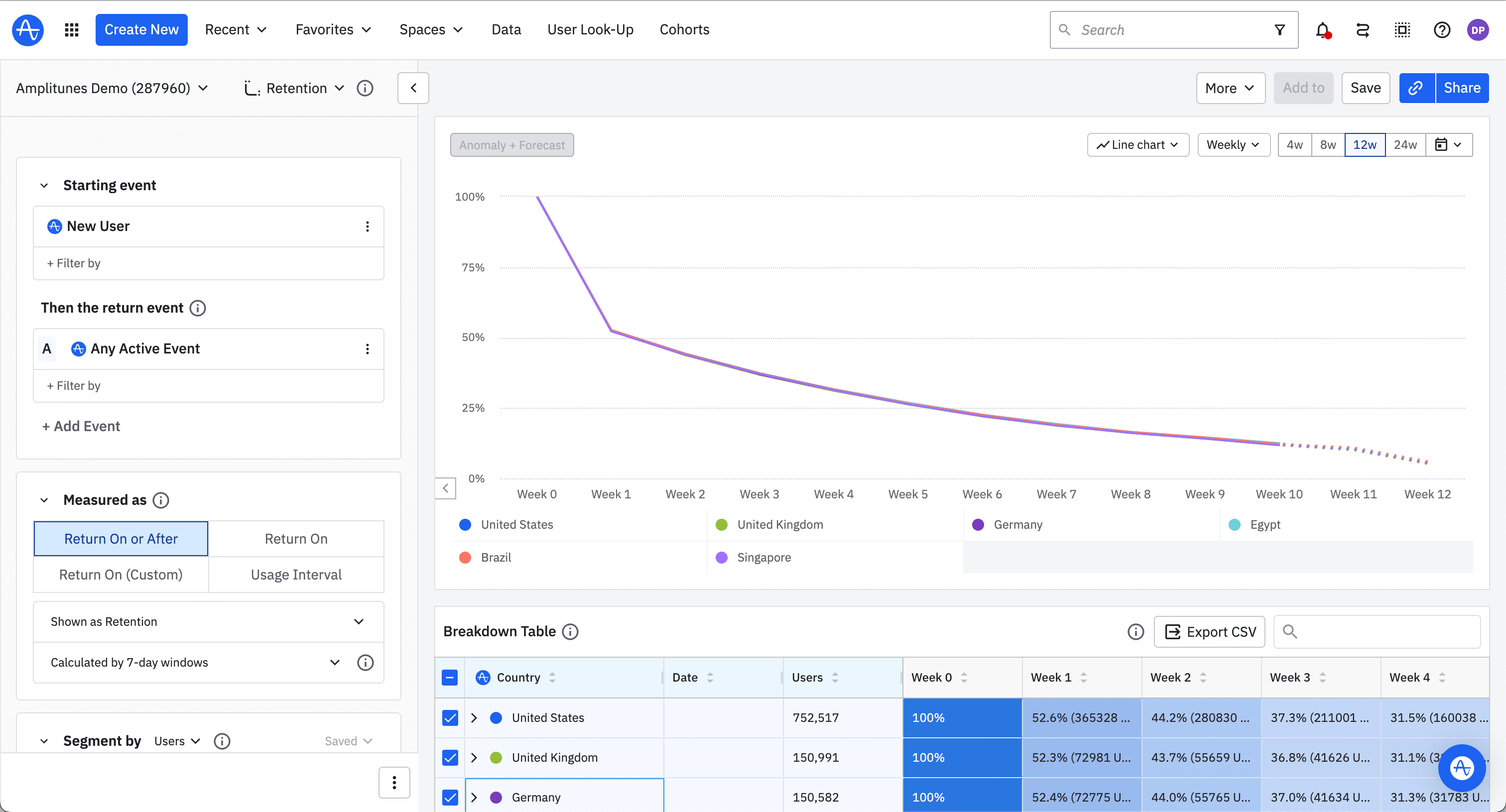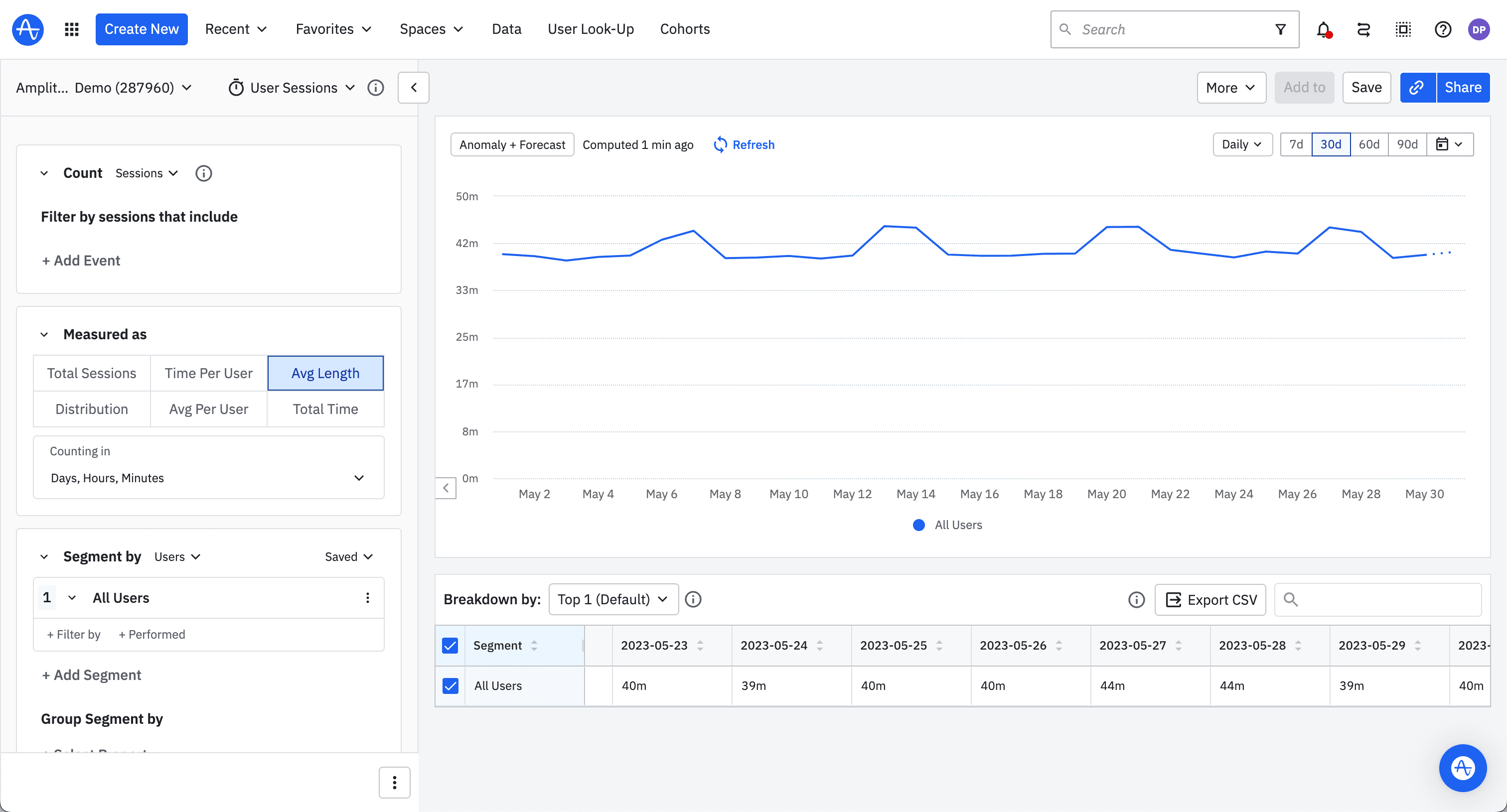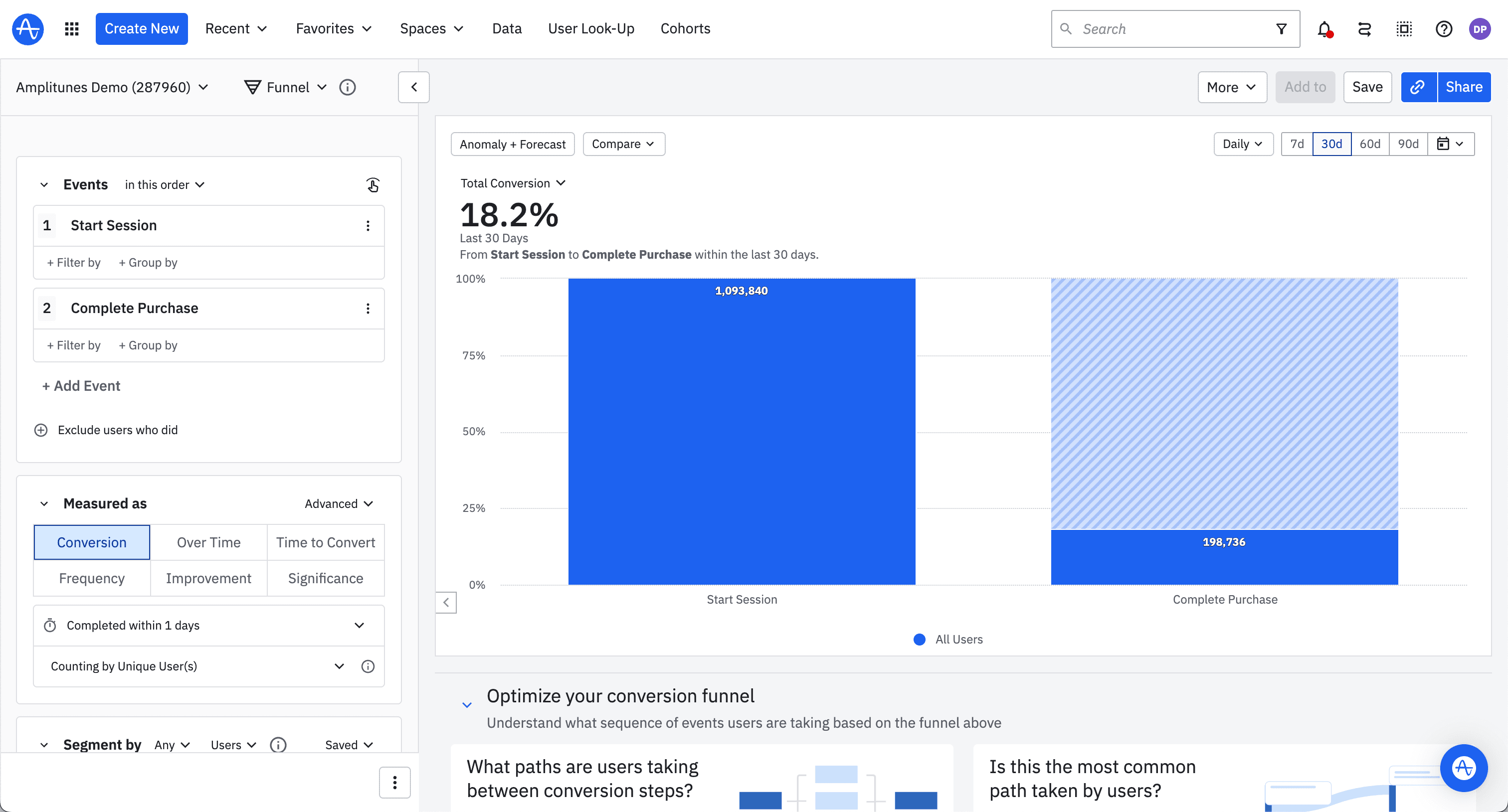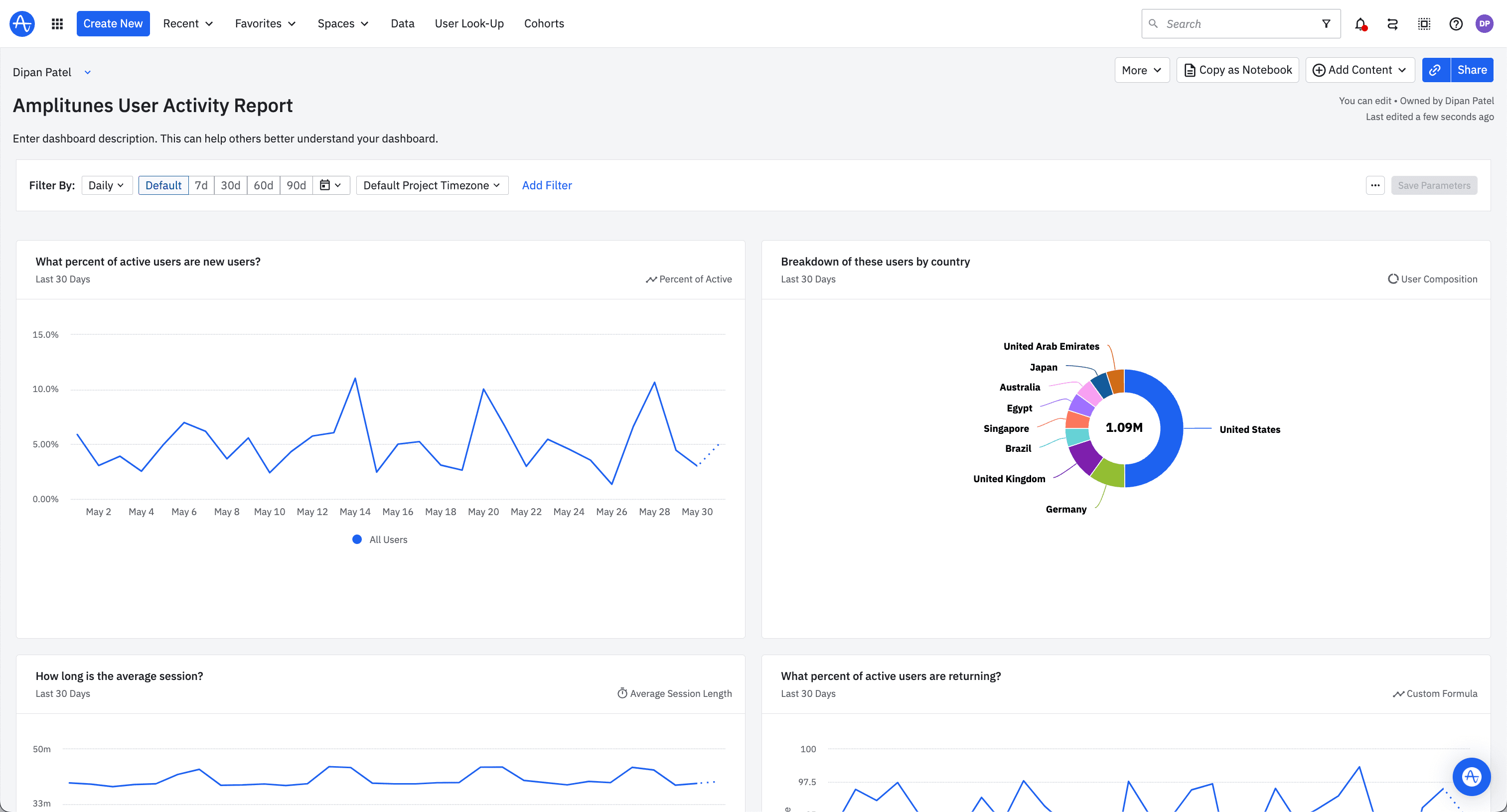UX Analytics 101: How to Use Data to Improve User Experiences
User experience is both an art and a science. Here’s a guide to the science.
Originally published on June 16, 2023
Browse by category
User experience (UX) analytics is the practice of using data to measure how an experience is performing, gleaning insights from your chosen metrics, and acting on those insights.
Creating a good user experience involves making your product intuitive and delightful to use. Using data to improve your UX directly benefits the growth of your business.
Key Takeaways
- UX analytics parses data about how people are using your product to find ways to improve the user experience.
- By tying UX metrics to business goals, you can grow revenue and bolster your brand’s reputation.
- UX design is both art and science. UX analytics provides the data and insights that inform effective UX design experiments.
- A clear, simple dashboard helps connect your whole company to the metrics that drive success for your business.
What is UX analytics?
A user experience, or UX, is a holistic look at how a user interacts with your product. Usually, that product is an app, game, website, or software.
The user experience starts when a user tries to open your product. They expect your page to load quickly. They want the layout and design of that app to be visually appealing. And they want to solve their problem—whether answering a question, finding a product, or completing a purchase—quickly and easily.
UX analytics is how you measure and improve all of those aspects of the user experience.
The metrics you use for UX analysis can include how much time a person spends in your app or on your website, what they click on while there, what features they use most, and what purchases they make. Even the absence of actions—like an abandoned shopping cart or a link a user hovers over but doesn’t click—is data you can analyze for new insights about improving the user experience.
For example, consider someone who wants to better track their budget. Ideally, you want them to search for a budget app and visit your website. Then, you want them to download your app, sign up for a trial, and add their bank accounts or credit cards. At the end of the trial, you expect them to become a paying customer.
Each step in that process requires a good user experience to encourage that person to continue to the next step in the customer journey. If they don’t complete the journey, you can use UX analytics to understand where they fell off, why they fell off, and, ultimately, what you can do to improve the user experience in the future.
How UX analytics can help drive business decisions
UX analytics can help your business decide whether to invest in more marketing, invest in better infrastructure, update and fix flawed features, or develop new features.
Some common UX metrics product managers use to make these decisions include:
Response time. People won’t wait long for your page or application to load. Search engines don’t like slow load times either. If it takes too long for your page to load, then your page rank and traffic could suffer.
New and returning visitors. These metrics give you insight into how well you attract and retain users. If your number of new visitors isn’t climbing, you may need to revisit your marketing strategy. If your rate of returning visitors is low, it’s time to take a deeper look at your product. Perform retention analysis to see how behavior differs between the users you retain and those who churn. For example, the meditation app Calm discovered that people who set reminders were more likely to keep using the app. With that knowledge, the company updated its onboarding flow to encourage users early on to set reminders.

An example of Amplitude's Retention Analysis chart to track new and returning users. Try it yourself in our demo environment.
Session length. This measures how long a user stays after they open your product. Your product will determine if a long session is good or bad. If you’re a news app, a long session is likely a sign of an engaged user. If you’re a cash transfer app, a long session could indicate users are having difficulty accomplishing the task they want.

Pages per session. As with session length, someone visiting many pages on your product can be good or bad, depending on the context. They might be deeply engaged, or they might be frustrated they can’t find the answer they are looking for. If it’s the latter, you’ll need to make finding answers easier with fewer clicks.
Conversion rate. You want to track conversion rates for every stage of the customer journey. Each stage offers opportunities to encourage more people to engage further with your product. If users aren’t clicking your ads, then you can adjust the messaging. If they are downloading your product or signing up for your services but not becoming paying customers, you can adjust your onboarding flow to help them have their "aha" moment sooner.

Task success rate and time on task. Few metrics can give you a clearer look at whether your product is usable than your task success rate and time on task. If users take more than one try to accomplish something with your product, whether subscribing to a newsletter or adding a friend to their network, they are more likely to get frustrated and churn. The same thing goes for tasks that take too long to accomplish. For example, a hungry user won’t have patience for your app if it takes them five minutes to place an order.
Focus on tasks that are core to your product, and make sure to make completing those tasks as natural, intuitive, and simple as possible.
Stickiness. Stickiness is measured by dividing daily average users (DAU) by monthly average users (MAU). The result gives you the number of days per month the average user engages with your product. The more days per month people use your product, the more likely they are to build a habit of using it.
This metric is particularly useful for businesses playing the attention game but is not the right metric for every business. Like all metrics, you should only apply it if it fits your business goals.

Navigation vs. search ratio. When your users have to lean on the search bar to find what they need within your product, it’s a sign that your product design is not intuitive. Experiment with different layouts, structures, and organizations to find a design that lets users quickly find what they are looking for in as few clicks as possible.
Feature engagement rate. You can determine how often people use features by dividing how often a feature gets used by how many people open your product.
Combine feature engagement rate with retention analysis to see if people who use a feature are more likely to be retained. If an important feature isn’t widely used, you may need to display it more prominently. You could send notifications or emails to users pointing out why the feature is valuable to them. Alternatively, if a feature doesn’t seem to have any bearing on business results, that might indicate it’s safe to invest less in that feature and deprecate it with the next update in favor of improvements to a higher-value feature.
Net Promoter Score (NPS). This simple, one-question survey is often used to indicate satisfied, loyal customers. An NPS asks users, “On a scale of 0 to 10, how likely are you to recommend our business to a friend or colleague?” If your score dips below seven, you need to make some changes.
Customer churn rate. You can calculate customer churn by subtracting how many customers you have at the end of the month from the number of customers you had at the beginning of the month. Then divide that figure by how many customers you had at the beginning of the month.
If you had 100 customers at the beginning of June and 90 customers at the end of June, your churn rate would be 10%.
Understanding the relationship between UX design & data analytics
UX design is about more than making the product look pretty. It’s about making people fall in love with a product because it feels natural to use, and the results surpass their expectations.
Achieving that result is as much science as art, and science needs data, analytics, and experimentation. Analytics involves using data to generate insights. You can then turn those insights into a hypothesis, which UX design tests with experiments to prove or disprove.
For example, a product manager for a running shoe company discovers they aren’t generating enough repeat purchases. The data show that most customers purchase shoes every ten months. They hypothesize that customers would be more likely to repeat purchases if the company sent an automatic reminder after ten months.
The product team can then partner with the marketing team to A/B test different messaging and layouts for an email to different cohorts to see if they can increase the rate of repeat purchases.
Four must-have UX analytics tools
The right analytics tools make it easy to quickly pore through massive reams of data and automatically generate new insights.
Here are some tools that put real-time, actionable information in front of product managers.
- Amplitude is an analytics tool that helps teams understand how users interact with their products. It allows you to track user behavior across different platforms and channels, visualize user journeys, and analyze data to gain insights. With Amplitude, you can answer questions like "What features are users engaging with most?" and "Where are users dropping off in the funnel?" to improve your user experience.
Other UX analytics tools include:
How to use UX analytics dashboards for tracking
UX analytics is most effective when the entire organization is oriented toward using analytics to make decisions. The best way to create that unified approach is to have an easy-to-understand UX analytics dashboard.

The best dashboards will place the most important metrics at the very top. A daily dashboard might include no more than three or four metrics to highlight to avoid overwhelming people. These metrics should tie directly back to your business goals. Someone should be able to glance at the topline of your dashboard for a pulse of how the business is doing.
Below that, include different time frames in your dashboard. An hourly or daily time frame can identify issues that need to be addressed immediately—like slow response times—whereas a monthly or quarterly time frame can reveal trends in the data.
Make it easy to design, execute, and analyze experiments with Amplitude
User experience is critical to your product’s success or failure. The data that indicate how users feel about your product needs to be accessible to everyone, not just your data analysts. Everyone in your organization should be able to use that data to answer questions about user behavior quickly on their own.
Amplitude allows anyone to perform UX analytics. Get started with a free account to build better user experiences today.

Dipan Patel
Former Principal Solutions Consultant, Amplitude
Dipan Patel is a Former Principal Solutions Consultant at Amplitude. His career has focused on helping clients, ranging from Fortune 500 companies to startups, build better products with qualitative and quantitative data. When he's not working, you can find him hiking, skiing, or reading.
More from Dipan




